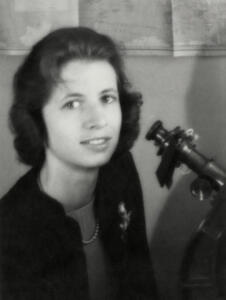Dorothy Nell Davis (Locanthi) (1913-1999)

© Regents of the University of California. Courtesy Special Collections, University Library, University of California Santa Cruz. Lick Observatory Photographs
From Celestial Observers: Sixteen Berkeley Women Doctoral Graduates in Astronomy 1913-1952
By Sheila Humphreys
[1] Saul J. Adelman and Michael M. Dworetsky. “Dorothy N. Davis Locanthi” Physics Today, Aprll 2000, 88.
